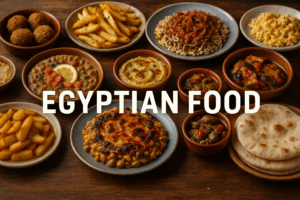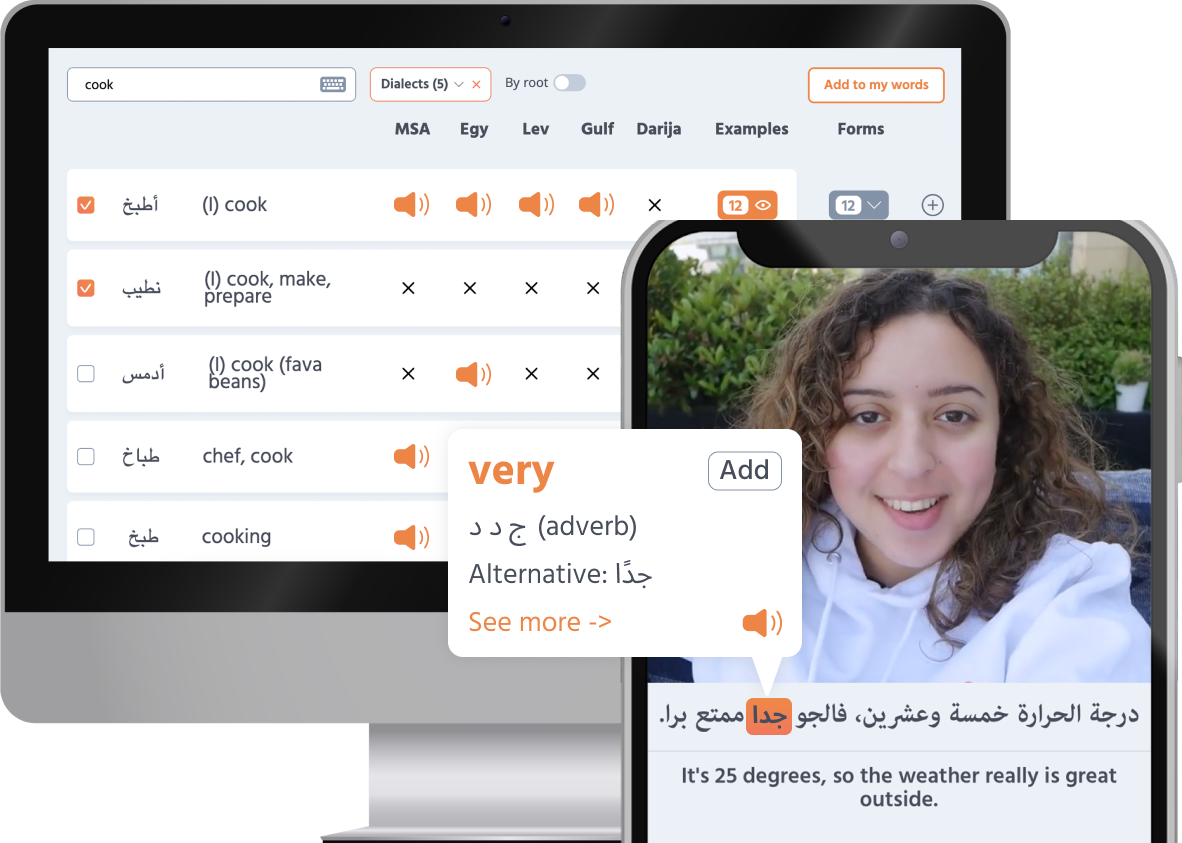Did you know that Spanish, the fourth most spoken language in the world, isn’t just a product of Latin, but also of Arabic? As the official language in 21 countries, Spanish boasts a fascinating history deeply intertwined with the language and culture of the Arab world .
Whether you’re a Spanish speaker eager to uncover the Arabic roots within your language, boost your Arabic vocabulary, or simply curious about the impact of Arabic on Spanish, this blog will take you on a captivating journey through time. Discover the stories behind common words, the origins of place names, and the cultural exchanges that have shaped Spanish into the vibrant language it is today. Dive in and explore the Arabic connections that continue to enrich Spanish language and culture.
Koldo Biguri , CC BY-SA 4.0 , via Wikimedia CommonsReasons for Arabic influence on Spanish Arab and Berber Muslims from North Africa invaded the Iberian Peninsula, now known as Spain and Portugal, in 711 AD – more than 1,300 years ago.
The invastion was led by the Umayyad commander Tariq ibn Ziyad after crossing the Strait of Gibraltar, whose name comes from جِبِل طارِق
which literally means “Tariq’s Mountain.”
Tariq and his army achieved a decisive victory at the Battle of Guadalete on July 19, 711 AD, paving the way for Muslim expansion across the peninsula, known as the opening of Andalusia, فَتْح الانْدَلُس
Subsequently, they established an Islamic state known as al-Andalus, which lasted over 700 years and flourished as a center of cultural, scientific, and economic prosperity, renowned for its advancements in art, architecture, literature, and the sciences. During this period, Arabic became the dominant language in governance, education, commerce, and culture. Though Latin, the precursor to modern Spanish, remained prevalent, Arabic heavily influenced the language and helped it evolve into what we now recognize as modern Spanish.
Arabic influence on Spanish vocabulary If you already speak a bit of Spanish, you may already know more Arabic words than you think. That’s because one of the most apparent and enduring influences of Arabic on Spanish is the large number of borrowed and derived words. A borrowed word is a word taken from another language and used without translation. A derivation is a word formed from another word by adding prefixes or suffixes.
Common Spanish words from Arabic There are more than 4,000 Arabic-derived words in the Spanish dictionary, many of which are common and used in everyday life.
Below is a list of common Spanish words with Arabic origins. Many Spanish words beginning with “a” or “al-”
have Arabic roots. In the table, we’ve omitted the definite article “al-” (ال)
from the Arabic words, though they’re typically added. Many of these words have been adapted to fit the Latin alphabet and Spanish phonetic patterns.
English Spanish MSA Levantine Egyptian Gulf Maghrebi oil aceite
زيت
زيت
زيت
زيت
زيت
olive aceituna
زيتون
زيتون
زتون
زيتون
زيتون
pillow almohada
مخدة
مخدة
مخدة
مخدة
مخدة
construction worker albañil
بنّاء
X X X X alchemy alquimia
كيمياء
كيميا
كيميا
كيميا
X alcohol alcohol
كحول
كحول
كحول
كحول
X rice arroz
أرز
رز
رز
رز
روز
cotton algodón
قطن
قطن
قطن
قطن
قطن
sugar azúcar
سكر
سكر
سكر
سكر
سكر
lagoon albufera
بحيرة
X بحيرة
بحيرة
X scimitar alfanje
خنجر
خنجر
X خنجر
خنجر
irrigation ditch acequia
ساقية
ساقية
ساقية
X X oil mill almazara
معصرة
معصرة
معصرة
معصرة
معصرة
village aldea
ضيعة
ضيعة
X X X mayor alcalde
قاضي
قاضي
قاضي
قاضي
قاضي
orange naranja
نارنج
نارنج
نارنج
X X blue zarco
أزرق
أزرق
أزرق
أزرق
ازرق
lemon limón
ليمون
ليمون
لمون
ليمون
ليمون
eggplant berenjena
باذنجان
باتنجان
بتنجان
باذنجان
بودنجال
jug jarra
جرّة
جرة
X X X hostage rehén
رهينة
رهينة
رهينة
رهينة
رهينة
Spanish influence on Arabic vocabulary Many Spanish words have made their way into Arabic over the centuries, becoming part of everyday vocabulary in Modern Standard Arabic (MSA) and various dialects , like Darija , Levantine , Egyptian , and Gulf . The table below lists Arabic words from Spanish:
English Spanish Darija Levantine MSA Egyptian Gulf bathtub baño
بانيو
بانيو
X بانيو
بانيو
mess/chaos ruina
روينة
X X X X cart carroza
كروسة
X X X X dress saya
صاية
X X X X table tabla
طابلة
X طاولة
X X wheel rueda
رويضة
X X X X Spanish español
سبليون
X X X X tomato tomate
X X طماطم
طماطم
X shrimp camarón
قيمرون
X X X X blanket manta
مانطة
X X X X school escuela
سكويلة
X X X X coat capote
كبُّوط
كَبُّوت
X X X sandal sandalia
صَنْدَالَة
صندل
صندل
صندل
صندل
soup sopa
صُّوبَّة
X X X X week semana
سيمانا
X X X X total; summed suma
سُّومَة
X X X X
These changes occurred due to the absence of letters like ق
(qāf), ض
.
(ḍād),ح
(ḥā’), ع
(‘ayn), and غ
.
(ghayn) in the Latin alphabet, and Arabic word endings were often changed from consonants to vowels to fit Spanish tastes.
Many Spanish cities and regions have names of Arabic origin. Here are some prominent examples:
City/Region Arabic Name Meaning/Translation Historical Context Andalucía
أَنْدَلُسُ
Andalusia The Muslim-ruled region of the Iberian Peninsula from 711 to 1492 left a lasting legacy on Spanish culture and architecture Almería
المَرأى
lookout/mirror Founded by Caliph Abd al-Rahman III Nasir in 955 AD, it was famous for its watchtower, which served as a lookout (offering a mirror-like reflection on the sea) Algeciras
الجزيرَة الخضرة
The green island Founded by the Moors in the early 8th century and served as a crucial port and trading hub near the Strait of Gibraltar Valladolid
بلد الوليد
Named after Umayyad Caliph Al-Walid ibn Abd al-Malik Named after the Umayyad Caliph Al-Walid ibn Abd al-Malik, who ruled from 705 to 715 AD Guadalquivir
الوادي الكبير
The great river The only major navigable river in Spain
Arabic influence on Spanish grammar and pronunciation The Arabic influence on Spanish grammar is less obvious than its impact on vocabulary, but is still present.
One example is the use of the definite article “el”
before some feminine nouns that begin with a stressed sound, such as “el agua”
(the water), “el alma”
(the soul), and “el hambre”
(the hunger).
This usage stems from Arabic, where there is no distinction between masculine and feminine in sources, and all names start with a fixed sound. To avoid a clash between two vowel sounds, Spanish speakers adopted using “el”
instead of “la”
before these names.
Another example of Arabic Influence on Spanish Grammar is the use of the suffix –i or –y to form adjectives from place names , such as:
Spanish Arabic Meaning Iraquí
عراقي
Iraqi Marroquí
مغربي
Moroccan Turco
تركي
(Turki) with a modification in the ending by adding an (o) Turkish
This suffix comes from the Arabic genitive case, which indicates a relationship or affiliation with something. It’s also used in other languages influenced by Arabic, such as Persian and Urdu.
Arabic influence on Spanish phonetics The Arabic influence on the Spanish language, particularly in terms of phonetics and sounds, is more nuanced and limited than its substantial impact on vocabulary. While the Arabic language didn’t directly reshape the fundamental sound structure of Spanish, there are subtle reflections in certain phonetic aspects:
The “J”
or “G”
sound in Spanish appears when “j”
or “g”
comes before the letters “e”
or “i”
in Spanish words. You can hear it in words like “jamón”
(pronounced like “kha-MON”, which means ham) or “gente“
(pronounced like “KHEN-te”, which means people).
This sound is throaty and deep, similar to the “ch” in the Scottish “loch” or the German “Bach.” It closely resembles the Arabic letter خ
(khāʼ) . This sound is especially common in Southern Spain, in areas like Andalusia, which had a long history under Moorish rule. The influence of Arabic on Spanish is evident in the pronunciation patterns found in this region of Spain.
Pronunciation of certain words: The pronunciation of some Spanish words borrowed from Arabic might retain a slight phonetic character reminiscent of Arabic. However, this influence is more about specific words rather than a broad phonetic influence on the Spanish language as a whole.
Spanish: Almohada
(pillow).
Arabic origin: مخدة
(mikhadda).
The “al-”
in “almohada”
reflects the Arabic definite article ال-
, and the overall pronunciation retains a softness that is reminiscent of Arabic phonetics, though adapted to Spanish norms.
Loanwords: The phonetic aspects of some Arabic loanwords in Spanish have influenced pronunciation patterns, especially in terms of maintaining the “h”
sound in words that originally began with an Arabic ح
(ḥāʼ) or خ
(khāʼ), though these are often adapted to fit Spanish phonetic norms (e.g., “alcohol”
from Arabic الكحول
al-kuḥul).
These examples illustrate how Arabic has subtly influenced certain unique sounds in Spanish, reflecting the historical blend of cultures in Spain.
Enduring Arabic legacy in Spanish culture The influence of Arabic on Spanish is not only linguistic but is also cultural . Many buildings and landmarks in Spain feature Arabic styles or elements, such as:
Alhambra in Granada: The name “Alhambra” comes from الْحَمْرَاء
which means the “the red one,” in reference to the reddish color of its walls.
The Mosque of Córdoba: Known as “La Mezquita” in Spanish, this grand mosque (now a cathedral) was originally constructed during the Moorish rule of Córdoba. The name “Mezquita” derives from مسجد
which means mosque.
The Giralda in Seville : Originally built as the minaret for the Great Mosque of Seville, it’s now the bell tower of Seville Cathedral, converted from a mosque.
The Segovia Palace : The Segovia Palace, also known as the Alcázar of Segovia, has medieval origins. “Alcázar” comes from القصر
, meaning the palace or fortress.
Flamenco music, which originated in Andalusia, incorporates elements from Moroccan, Jewish, and Romani music. The guitar evolved from the Arab oud.
Spanish cuisine also bears Arabic influence, with dishes like paella
derived from بقايا
(literally: leftovers), and tapas, small food portions originally used to cover wine glasses to keep flies out, a practice introduced by the Moors.
Additionally, Arabic influence permeates Spanish literature, as seen in works like Miguel de Cervantes’ ‘Don Quixote,’ which contains many Arabic-origin words and expressions, and Federico García Lorca, who drew inspiration from Moroccan culture and poetry in Granada. This profound integration of Arabic showcases the rich, intertwined heritage that shapes much of Spain’s cultural landscape today.
Curious about the connections between Arabic and other languages? Then dive into our articles exploring the fascinating links between Arabic and French, Hebrew , English , Italian , and Persian !
Oh, and by the way… If learning Arabic at your own pace, with fun, real-world videos sounds like your style, then Playaling could be exactly what you’re looking for!
With Playaling, you’ll dive into any major Arabic dialect or MSA. Our diverse range of videos has it all—from everyday conversations and cultural moments to music videos, TV and movie clips, influencer content, news broadcasts, and inspiring talks.
Our interactive captions let you tap any word for instant translations, context, and audio. So, real Arabic content becomes accessible with just a click. Miss something? No problem—rewind and listen as often as you need, or hover over subtitles for quick definitions.
Spot a word you want to learn? Save it to your personalized word set, or dive into curated sets for focused practice and easy review.
Interactive exercises let you dive in and practice what you’ve learned.
Need to look something up? The Audio Dictionary has you covered with clear human pronunciations and real world examples.
It’s a learning experience that keeps you engaged, bringing authentic, real-world Arabic closer to you every step of the way.
Give it a try!









